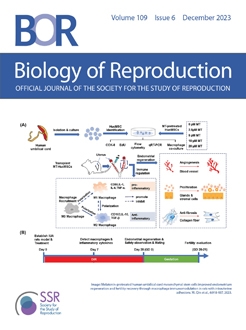Significant events that determine oocyte competence occur during follicular growth and oocyte maturation. The anti-Mullerian hormone, a positive predictor of fertility, has been shown to be affected by exposure to endocrine disrupting compounds, such as bisphenol A and S. However, the interaction between bisphenols and SMAD proteins, mediators of the anti-Mullerian hormone pathway, has not yet been elucidated. AMH receptor (AMHRII) and downstream SMAD expression was investigated in bovine granulosa cells treated with bisphenol A, bisphenol S, and then competitively with the anti-Mullerian hormone. Here, we show that 24-h bisphenol A exposure in granulosa cells significantly increased SMAD1, SMAD4, and SMAD5 mRNA expression. No significant changes were observed in AMHRII or SMADs protein expression after 24-h treatment. Following 12-h treatments with bisphenol A (alone or with the anti-Mullerian hormone), a significant increase in SMAD1 and SMAD4 mRNA expression was observed, while a significant decrease in SMAD1 and phosphorylated SMAD1 was detected at the protein level. To establish a functional link between bisphenols and the anti-Mullerian hormone signaling pathway, antisense oligonucleotides were utilized to suppress AMHRII expression with or without bisphenol exposure. Initially, transfection conditions were optimized and validated with a 70% knockdown achieved. Our findings show that bisphenol S exerts its effects independently of the anti-Mullerian hormone receptor, while bisphenol A may act directly through the anti-Mullerian hormone signaling pathway providing a potential mechanism by which bisphenols may exert their actions to disrupt follicular development and decrease oocyte competence.
Summary Sentence
Bisphenol A affects the anti-Mullerian hormone signaling pathways by disrupting SMAD downstream effector proteins via the anti-Mullerian hormone receptor in bovine granulosa cells, while its analog, bisphenol S, may exert its effects independently of the anti-Mullerian hormone receptor.
Graphical Abstract






